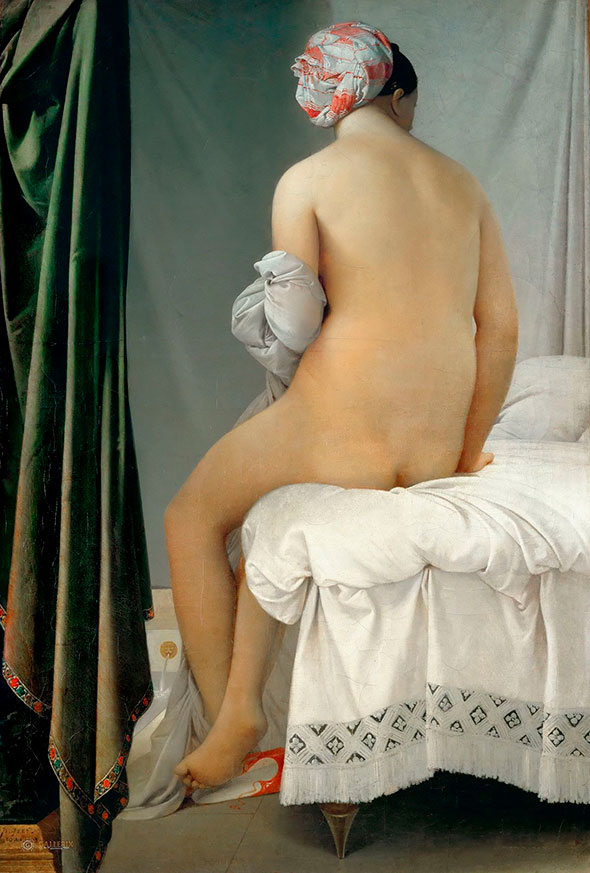
The Bather of Valpinçon (Jean-Auguste-Dominique Ingres, 1808, Louvre)
Orientalism is a polysemous term that is used both to designate Oriental studies (the study of current and historical Eastern civilizations, especially those of the Near and Middle East, and to a lesser extent those of the Far East), and to designate the representation (imitation or mystification) of certain aspects of Eastern cultures in the West by Western writers, designers and artists, which ended up becoming stereotypical topics.
Painters such as Eugène Delacroix, Jean-Léon Gérôme, and Alexander Roubtzoff reveled in depictions of all kinds of scenes set in the Arab countries of North Africa and the Middle East. Both landscapes and interiors emphasized the exotic and sensual aspects of the contrasts between the dazzling desert sky and light and the shadowy interiors, the fantastical colors of the clothing, and the seductive flesh tones—in all shades, from black to pearly white, including brown; especially in scenes of baths and harems, which allowed for the voluptuous representation of nude or semi-clothed odalisques in alluringly languid poses. When Jean Auguste Dominique Ingres, director of the French Académie de peinture, painted a highly colorful vision of a Turkish bath, he made this eroticized Orient publicly acceptable through his diffuse generalization of female forms, which could all have been the same model. Sensuality was seen as acceptable in the exotic Orient. This style reached its peak at the Universal Expositions in Paris of 1855 and 1867.



0 comments